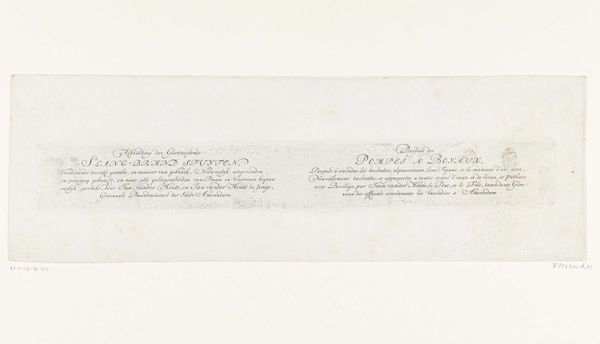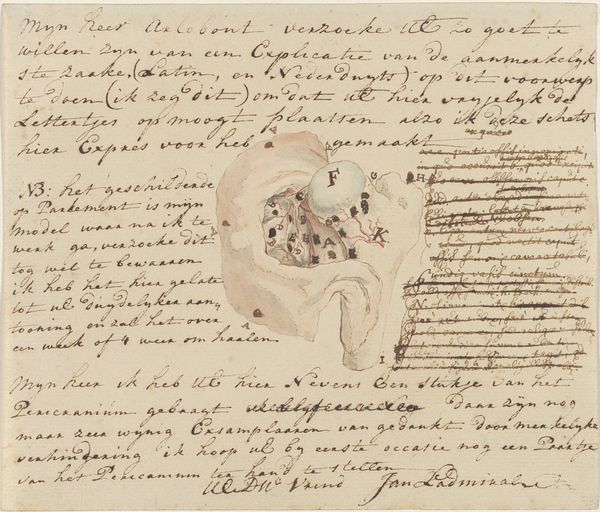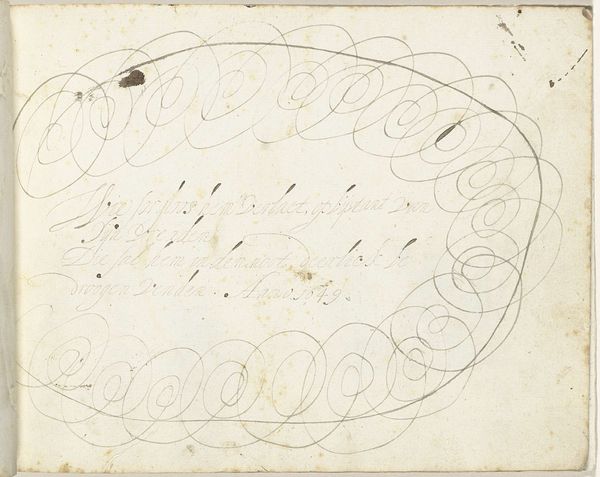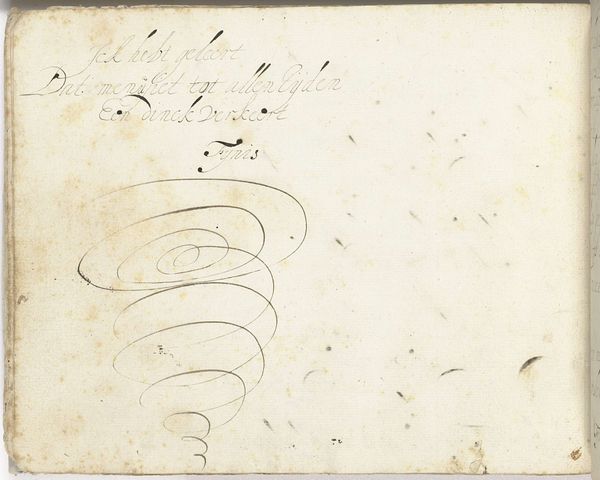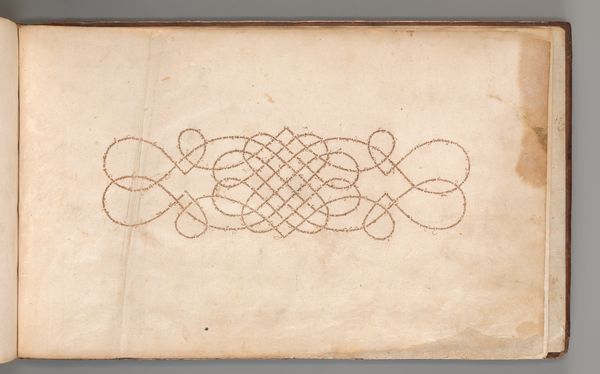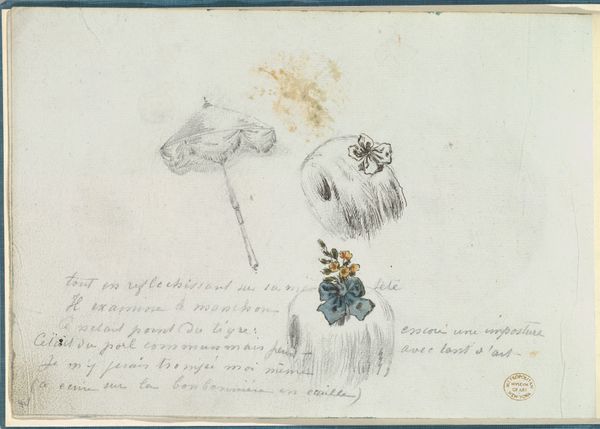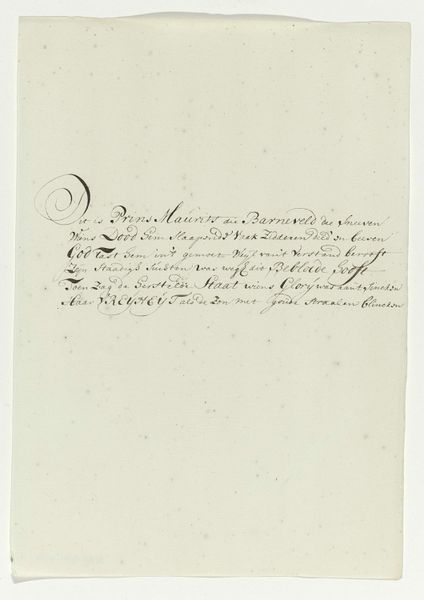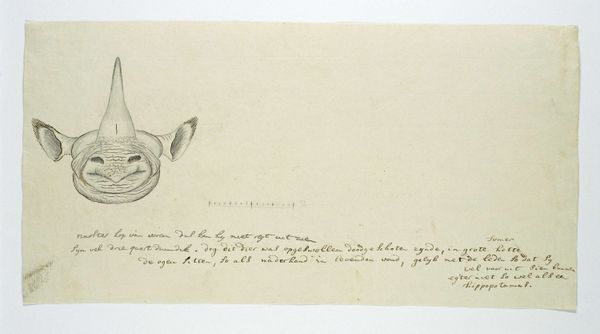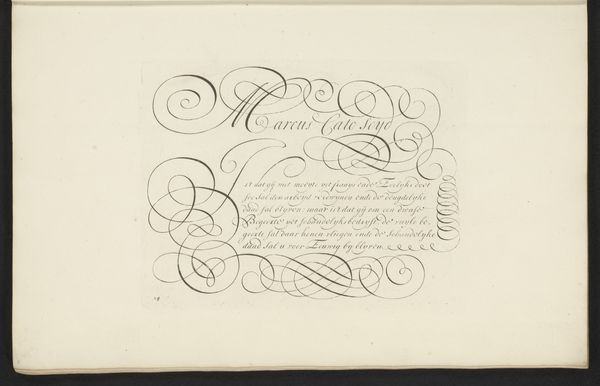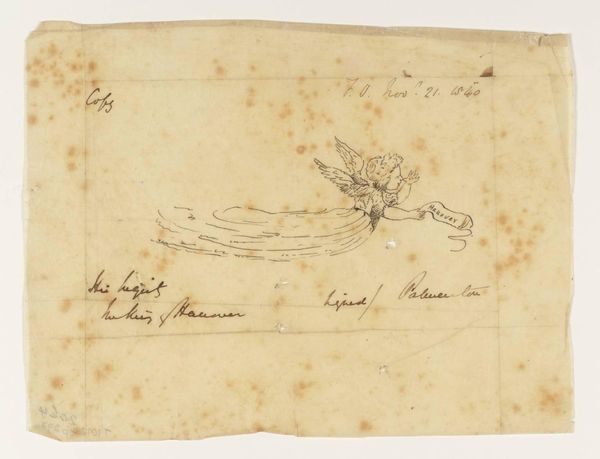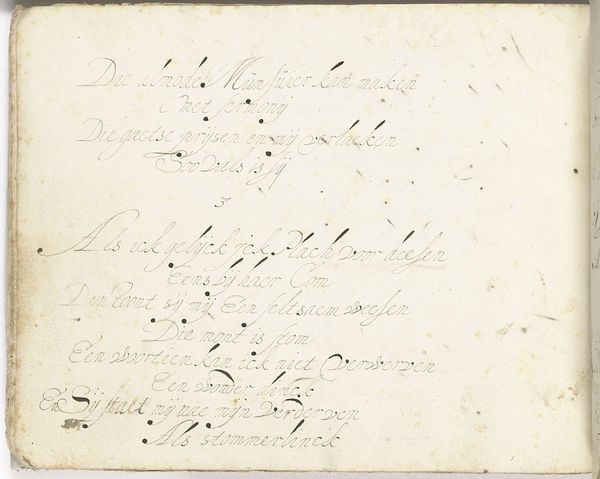
drawing, print, watercolor
drawing
watercolor
watercolour illustration
academic-art
Dimensions: height 660 mm, width 480 mm, height 253 mm, width 401 mm, height 228 mm, width 374 mm
Copyright: Rijks Museum: Open Domain
Editor: This drawing, possibly from 1777-1778, titled "Hippopotamus amphibius capensis (Hippopotamus)" by Robert Jacob Gordon, uses watercolor and print media. The hippo's rear is presented quite starkly, almost clinically. How would you interpret this work? Curator: Considering this within a materialist frame, I'm interested in the context of its production. Gordon was a military man and explorer; this wasn't created as "art" in the traditional sense, but as documentation. The "how" and "why" it was made are crucial. What does it tell us about the materials available to him, and the intended audience, likely other European scientists and colonizers? Editor: So, you’re less focused on aesthetic qualities and more on its function as a record, and what that reveals? Curator: Precisely. Think about the labor involved: grinding pigments, sourcing paper, the very act of observation and transcription. It becomes less about a "beautiful" hippo, and more about the systems of knowledge production and control during that era. How was nature being turned into a commodity of information? What impact would that representation have on the actual hippo population? Editor: That makes me rethink the writing around the image. It isn’t just a caption; it is almost part of the artistic piece, a label. Curator: Indeed, the text is integral. It’s the voice of authority, claiming knowledge and asserting a specific relationship with the animal. We have to consider who benefits from this type of documentation. Does it advance scientific understanding, or simply reinforce a colonial worldview? Editor: I hadn’t considered the power dynamics inherent in the drawing itself. Thanks; I now have a very different understanding of the artwork's intent! Curator: Understanding those material conditions offers an invaluable opportunity to challenge conventional ideas about "art" and its role in shaping our perceptions.
Comments
No comments
Be the first to comment and join the conversation on the ultimate creative platform.

